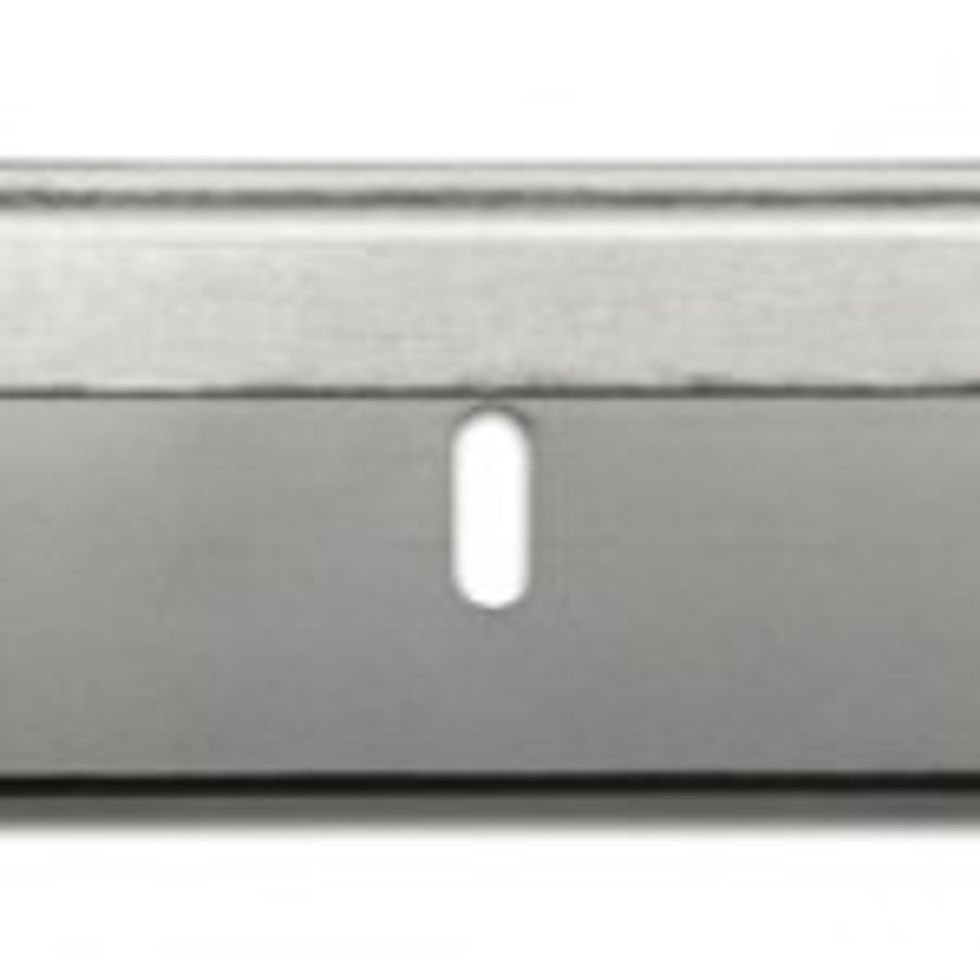An Inside Look At The Dangerous World Of Cutting

“I was trying to do my homework and I could not concentrate because I felt so crummy,” Dana* remembers. Nothing specific had happened, she just felt awful and she couldn’t figure out why. “I came across my tweezers and picked them up to put them away when, I don’t know where the idea came from, I touched the pointed edge to the inside of my forearm. It hurt a tiny bit, but much less than I thought it would. I felt a rush of emotions come over me…but in a good way. They were emotions I knew the names of: sadness, anger, frustration, fear, excitement.”
The feelings were so calming that Dana kept cutting—but deeper. “I watched the blood collect into little streams and run down my arm,” she says.
“I watched it dry in the creases of my palm. I felt like there was this calm buzzing throughout my body. I finished my homework, went to the bathroom to clean the blood off my arm and went to bed. The only thoughts in my head were that I would need to wear a sweatshirt to school the next day and that I was proud of myself.”
This was the first time Dana, then 13, injured herself on purpose. After, it became a pattern, something she did when she was too upset to stand it. The cuts were sometimes superficial and healed quickly—other times they were deep gashes that required bandages. Cutting made her feel better, but deep down she knew it was not only self-destructive, but a major problem. Dana hid her situation from the world by wearing long sleeves regardless of the weather—even to dance class.
Now a college sophomore, Dana, who underwent therapy and hospitalization, still struggles with the urge to self-injure, though less often. And she isn’t alone. Some studies suggest that 15 percent of adolescents report at least one instance of self-injury.
For dancers, this destructive urge may seem surprising. Dance is about training your body to be strong, healthy and beautiful. It’s about cultivating yourself into an instrument that will inspire audiences. But for some, the emotional and physical demands of dance can be too much to handle. While some of you may get mad at yourself for missing that double pirouette in class, others cannot handle the guilt and ultimately deal with their feelings by hurting themselves.
“There is the stereotype that people who cut are emo, wear a lot of eye-liner and cut themselves as they cry in the dark and listen to ‘Creep’ by Radiohead,” says Dana. But cutters can be dancers, musicians, model students, actors—there is no one profile. They can be outwardly miserable or outwardly successful. The common link is deep emotional suffering.
Understanding Self-Injury
Cutting is just one form of self-injury. Emotionally unbalanced men and women of all ages self-injure, though research indicates cutting is more common among females. Other forms of self-injury include burning and hitting. According to Alexandra DeGeorge, PsyD, a clinical psychologist who works with the NYU Child Study Center, those who self-injure tend to process their emotions differently than others. They can’t deal with disappointments in a healthy way.
“They see the world in emotional Technicolor—they experience happiness and sadness more than most of us,” says DeGeorge. “Recent research suggests that cutting helps regulate their emotions. They may get upset because they had a fight with their parents or they didn’t get an audition.” Instead of talking to a friend or writing their thoughts in a journal, cutters hurt themselves to escape the bad feelings.
For dancers with this problem, the urge to cut may arrive after a bad class, getting negative feedback from a teacher or having a fight with a dance partner. Any situation that leads to emotional distress can lead to cutting. In some cases, these situations may seem more dramatic to a cutter than they would to someone who doesn’t self-injure.
Cutting is usually seen as a symptom of another issue, like depression or a personality disorder. “The symptom can be found in any patient who has emotional distress,” says Ian Goldberg, MD, a child and adolescent psychiatrist in NYC. “They think, ‘Cutting is a way to control my body when I can’t control what’s happening in my life.’”
Though cutting may seem to be an effective coping mechanism, it’s ultimately a destructive one. Dana has the scars to prove it. “Scars are not something you think about when you’re 13,” she says. “Just think of all the people you’re going to meet—like your boyfriend and your potential husband and your children someday—how will you explain it to them?”
As a dancer, you know about ups and downs. You may not get a coveted role, you may have a difficult opening night or you may get sidelined by an injury. That’s why it’s especially important for dancers who self-injure to find healthy ways to deal with emotional pain.
Programs like DeGeorge’s treat teens through individual therapy as well as group sessions with parents. These teens learn coping tools that will serve them throughout their lives. Among the myriad ways to fight the urge to cut, one effective approach is to distract yourself. When you find you’re upset, make the decision to do something else. Invite a friend over to watch your favorite dance movies, play a game of dance-themed charades or take a soothing yoga class.
Taking Action
For Dana, the road to recovery began when she realized she wasn’t in control—a hard thing to admit for any dancer who spends her days controlling and disciplining her body.
“I tried stopping but found myself resorting to it even more, and each episode would leave more marks that took longer to heal,” Dana says. “I thought I hadn’t stopped yet because I didn’t want to, when in reality I had become dependent on cutting. I got scared and decided I needed to get help.”
If you cut yourself, first understand that you’re not alone. Talk to your parents, school counselor or dance teacher about what is going on and ask to be referred to a mental healthcare professional. A qualified therapist can help you deal with the underlying feelings that lead you to harm yourself.
If you suspect that a fellow dancer is cutting, don’t stay silent. “Do research online and encourage her to talk to her parents, so it’s not so much tattling as being supportive or caring,” DeGeorge suggests. Above all, keep your tone nonjudgmental or you may trigger your friend to further self-harm.
Dr. Goldberg warns that friendly concern may be rejected. “The person could pull away out of anger or disbelief,” he says. If this happens, the next step is to find a trusted adult, whether that’s the guidance counselor at your school, a parent or a mental healthcare worker.
Dana says a good way to help yourself is to take your mind off cutting. “Your body is important; it’s your instrument,” she says. “If you struggle with cutting, there are ways to help yourself. Buy a journal and write 10 pages a day before bed, or sign up for a swim class. Give yourself the freedom to try new things.” Express your feelings through art or music. Also, remove all sharp objects from your immediate area.
There is a light at the end of the tunnel for those suffering from this self-destructive behavior. Do not wait. Find help now!




